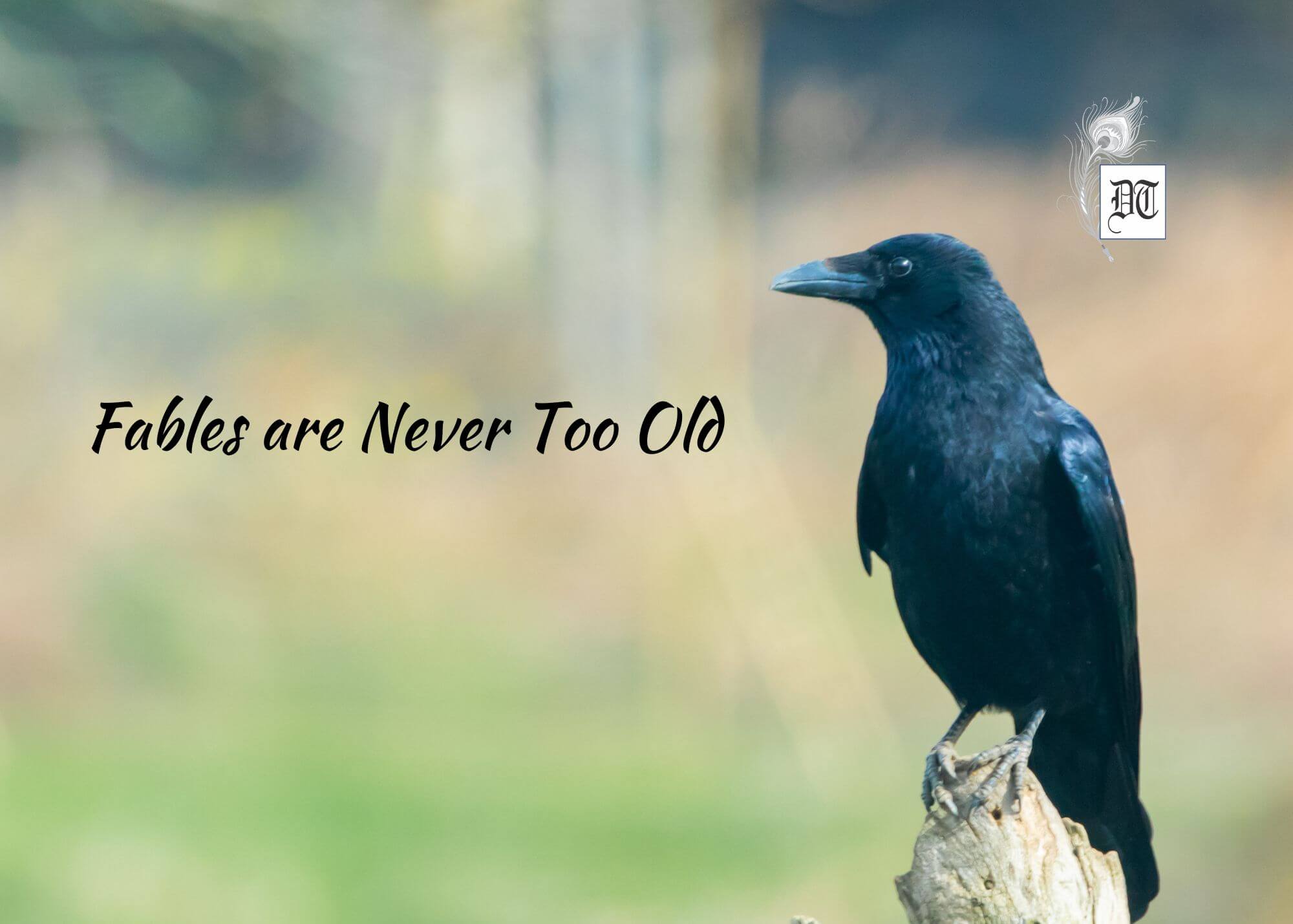Reading Time: 3 minutes
The continuity of the oral tradition attested by The Fox and the Crow story found on the pottery of Mohenjo-Daro and Lothal archaeological sites of a civilisation six thousand years old. Tapati unearths the many layers of folk-stories, in the regular column, showing how they reappear in many modern folk-stories and in stamps of many countries. A Different Truths exclusive.
The last festive season unfolded a great treasure while cleaning and painting the house. It revealed a goldmine of books forgotten and left lying in a hidden rack covered with heaps of old newspapers. Among them were a collection of children’s books and books of fables and fairy tales. The Panchatantra and Jataka stories had been my favourite ones. Most of these stories are contained in different folklores and they reappear in the collections of oral tales gathered in modern folk-stories. There was one book with a faded cover showing a colourful picture of a crow sitting on a tree and a fox on the ground. As I opened the book of Panchatantra, it took me back to my study reminding the Harappa pottery depicting scenes, which enlivened the stories later recorded in Panchatantra.
The Indian sub-continent had been bestowed with the one of the earliest and largest civilisation. The continuity of the oral tradition attested by The Fox and the Crow story found on the pottery of Mohenjo-Daro and Lothal archaeological sites of a civilisation six thousand years old.
…story found on the pottery of Mohenjo-Daro and Lothal archaeological sites of a civilisation six thousand years old.
On a large vessel from Lothal, two birds are portrayed, perch on a tree and holding fish in their beaks, in the bottom a fox with its bushy tail. The scene is reminiscent of the story of ‘The Cunning Fox’ when the fox praised the crow that it sang extremely well and the crow, getting puffed up, opened its mouth to sing. In doing so it dropped the fish held in its mouth and the cunning fox ran off with it.
Another miniature jar depicts the story of the thirsty crow and deer. It shows a scene where a crow is shown with a pitcher in front and an animal looking at it as if in wonder. The depiction recalls the story of a wise crow in which a thirsty animal failed to drink water from a narrow-mouthed pitcher while the crow kept on dropping pebbles in it until the water level raised high enough to let the crow drink from it.
Lothal suggests that the story may have been known there thousand years ago and must have been a popular one.
What seems to be a depiction of the tale on a painted vase discovered in excavations at Lothal suggests that the story may have been known there thousand years ago and must have been a popular one.
The same story has been narrated in a Jataka tale:
Once upon a time, when Brahmadatta was king of Benares, the Bodhisattva became a tree-sprite in a rose-apple grove. A Crow perched upon a branch of his tree, and began to eat the fruit. Then came a Jackal, and looked up and spied the Crow. The fox thought “If I flatter this creature, he will open his mouth and drop the fruit!” So he started praising the singing of the crow.
The Crow responded singing it required nobility to discover the same quality in others and the fruit slipped from his mouth for the jackal to share. Then the spirit of the tree, beholding these two eating, after flattering each other, repeated the third stanza:
“You both are liars, I very well know very well.
Her is a Carrion Crow,
And corpse-eating Jackal,
Both are flattering one another, one with self-interest and the other one happy with false praises!”
After repeating, the tree assumed a fearful shape and scared them both away.
These fables depict inherent practical knowledge of human wisdom and they are found all over the world in different languages surpassing all creeds and classes.
The old stories have been beautifully depicted in many artworks…
These fables are also found in the Perry Index, which contains fables credited to Aesop, the storyteller who lived in ancient Greece between 620 and 560 BC. The old stories have been beautifully depicted in many artworks, church architecture, Roman Columns, household china, on tiles, on vases, tapestry from the Middle East and many other places across lands and periods.

The story has also been a favourite with stamp designers. Many countries issued stamps which portray this popular fable of The Fox and the Crow. We have stamps from different countries like Albania, France, Greece, Maldives, Monaco, Niger, and Poland which feature The Fox and the Crow story.
But the fable is never too old; the wisdom still applies. The fox and the crow narrative is an ultimate warning against listening to flattery, told in a simplistic way; amazingly a simple but great truth of human behaviour was unfolded and shared by people since thousands of years across all regions and languages.
Picture design, Anumita Roy, Different Truths
















